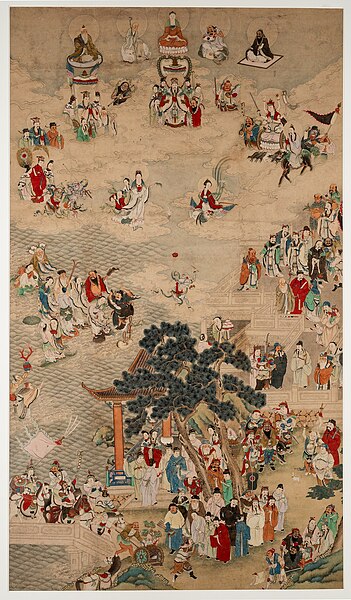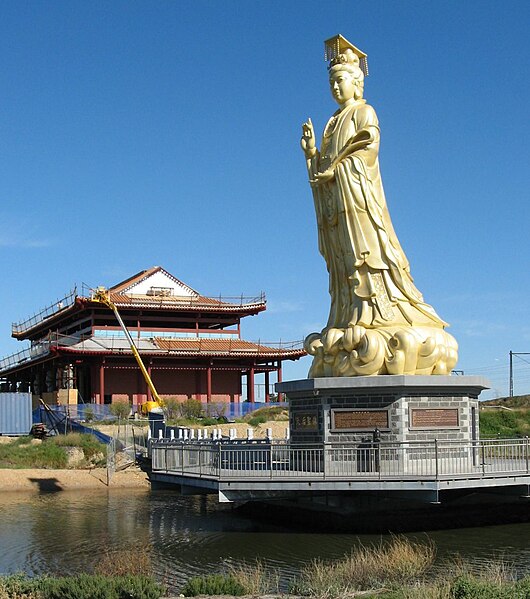Mazu or Matsu is a Chinese sea goddess in Chinese folk religion, Chinese Buddhism, Confucianism, and Taoism. She is also known by several other names and titles. Mazu is the deified form of Lin Moniang, a shamaness from Fujian who is said to have lived in the late 10th century. After her death, she became revered as a tutelary deity of Chinese seafarers, including fishermen and sailors. Her worship spread throughout China's coastal regions and overseas Chinese communities throughout Southeast Asia, where some Mazuist temples are affiliated with famous Taiwanese temples. Mazu was traditionally thought to roam the seas, protecting her believers through miraculous interventions. She is now generally regarded by her believers as a powerful and benevolent Queen of Heaven.
Statue at Lin Moniang Park in Tainan
Statue of Mazu at the Heavenly Queen Temple in Footscray, Victoria
Alleged tomb of Lin Moniang in Nangan in the Matsu Islands
Statue of Mazu (center), carrying a lantern and ceremonial ruyi, in Weihai
Chinese folk religion, also known as Chinese popular religion, comprehends a range of traditional religious practices of Han Chinese, including the Chinese diaspora. Vivienne Wee described it as "an empty bowl, which can variously be filled with the contents of institutionalised religions such as Buddhism, Taoism, Confucianism and Chinese syncretic religions". This includes the veneration of shen (spirits) and ancestors. Worship is devoted to deities and immortals, who can be deities of places or natural phenomena, of human behaviour, or founders of family lineages. Stories of these gods are collected into the body of Chinese mythology. By the Song dynasty (960–1279), these practices had been blended with Buddhist, Confucian, and Taoist teachings to form the popular religious system which has lasted in many ways until the present day. The present day government of mainland China, like the imperial dynasties, tolerates popular religious organizations if they bolster social stability but suppresses or persecutes those that they fear would undermine it.

Qing dynasty painting of the Chinese pantheon.
Xuanyuan Temple in Huangling, Shaanxi, dedicated to the worship of the Yellow Emperor.
The Temple of the City God of Wen'ao, Magong, Taiwan.
Temple of Hebo ("River Lord"), the god (Heshen, "River god") of the sacred Yellow River, in Hequ, Xinzhou, Shanxi.








